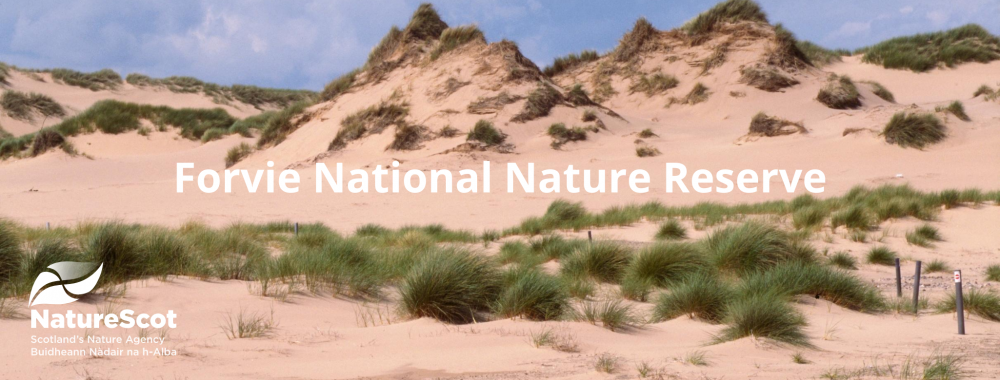It may not have felt like it, but this past week contained the official first day of summer at Forvie. In Reserve staff parlance, this is how we refer to the day upon which the ternery fence gets put up (or at least starts getting put up). And this year, that day was Thursday 7th March: the start of the crazy season. Problem is, it only seems like five minutes since we took the fence down at the end of last summer, and this unbelievably quick turnaround seems to defy science and logic. I, for one, am convinced that the Earth now orbits the Sun far more quickly than it used to.

Day one of the fencing job requires lots of pairs of hands, and as such has to be organised well in advance. Consequently, when the day arrives, you have to have what you’re given in terms of weather and working conditions. In seasons past we’ve endured some truly dreadful days of gales, sideways sleet, heavy rain and perishingly cold temperatures (thus there’s a teensy bit of irony in the oft-used ‘official first day of summer’ line). This time around, however, things could have been plenty worse.
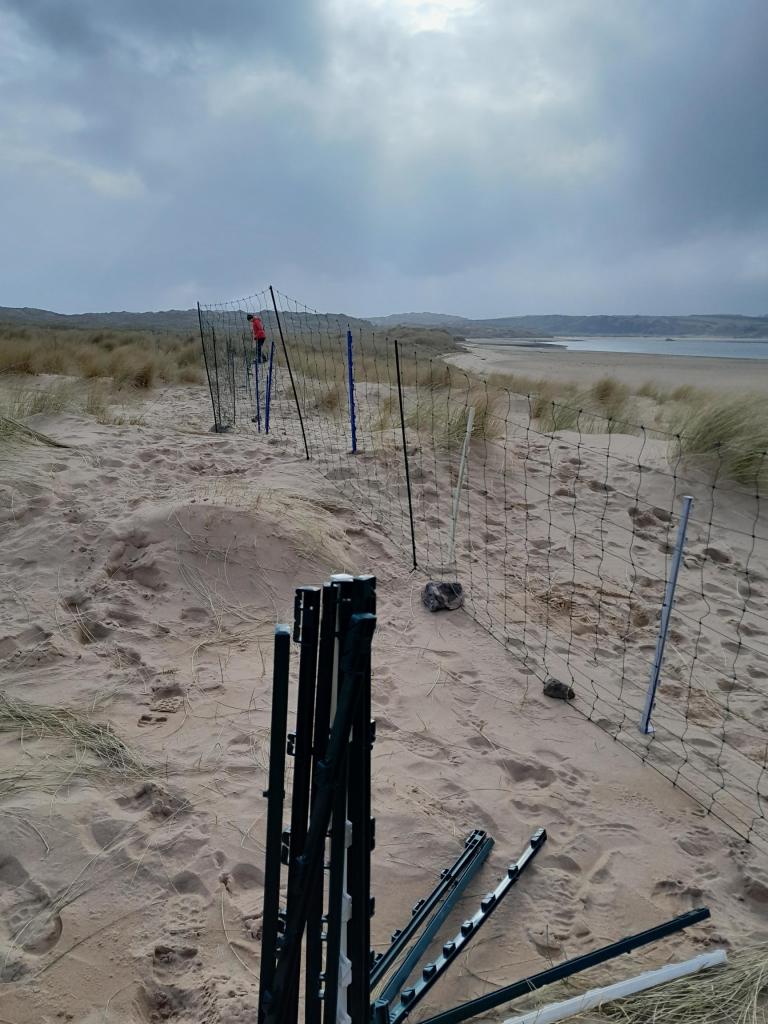
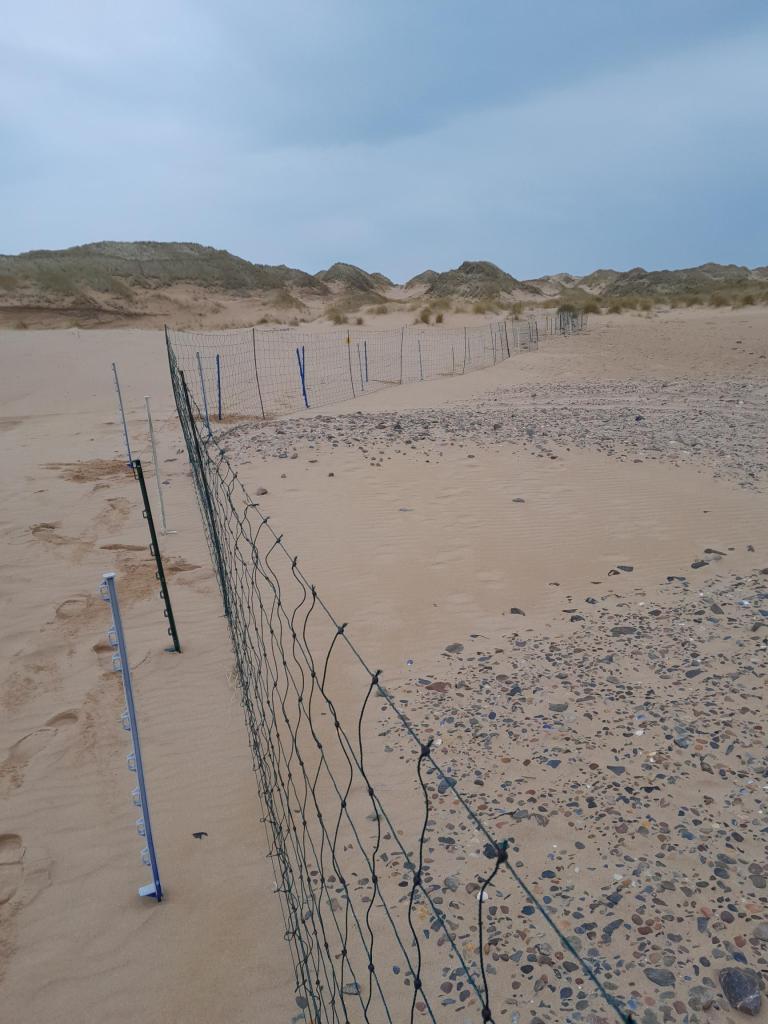

As always with this particular job, a debt of thanks is owed to our trusty band of volunteers who all put in a real shift. The 1,000-metre fence requires twenty hefty rolls of mesh netting, over 400 poly-poles and a substantial volume of ancillary bits and pieces; merely getting all this kit to where it needs to be is a considerable task. Never mind turning it all into something approaching a decent predator-proof fence. We quite literally couldn’t do it without all the extra help.
This year, special mention must also go to Simon from Muir of Dinnet NNR, who loaned us not just a very capable hand, but also his pickup truck. In the weeks leading up to this job, Forvie’s own pickup truck – an increasingly venerable, creaky and salt-encrusted old workhorse – failed its MoT and has since been laid up awaiting spare parts (this is hardly surprising given the tough life it’s endured here over the years). Shifting a half-ton of fencing materials a mile down the estuary by hand wasn’t a delightful prospect; thus we owe Simon a favour or two for answering the distress-call and coming to our rescue. And henceforth the Dinnet truck will forever be known as Thunderbird 1.
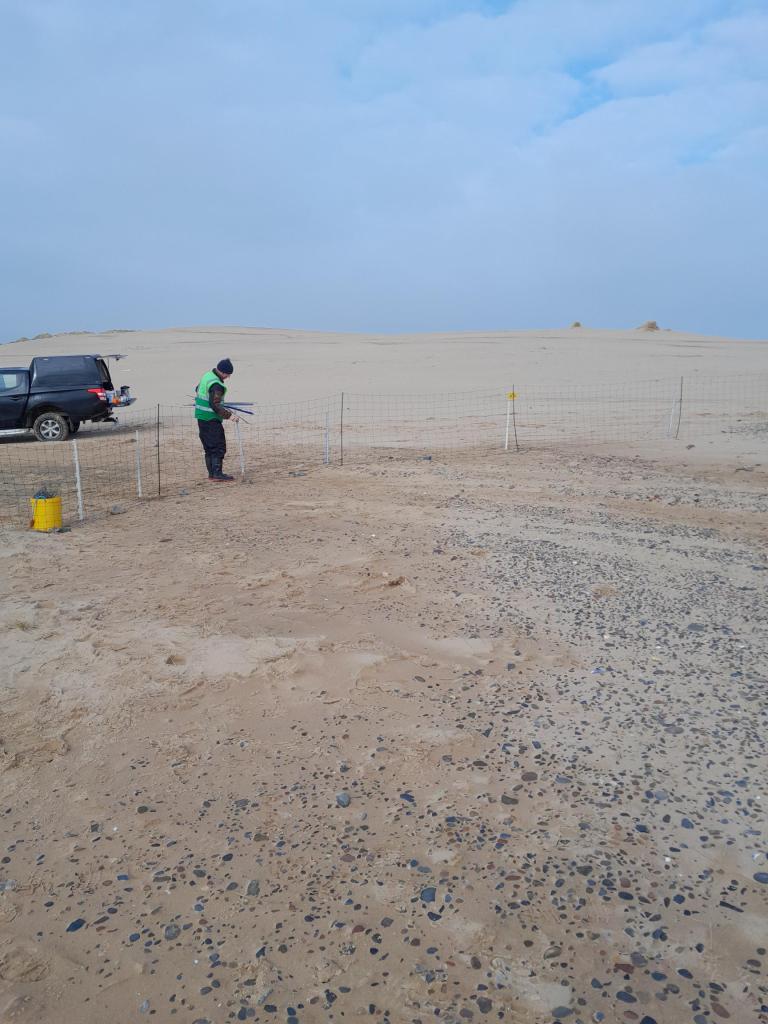
Earlier in the week, we had visited the ternery ahead of the big day, in order to strim the vegetation along the line of the fence. In recent years, the area has turned into a waist-high jungle of Marram Grass, presumably partly as a result of all the nitrate and phosphate deposited in the area by thousands of birds every summer. A broad swathe must be cut through the dense thatch with a brushcutter in order to accommodate the fence; this is a time-consuming job as well as being extremely hard on the machine (and in particular the metal cutting-blade, which gets worn down by the abrasive sand in double-quick time). The end result looks rather like a motorway cut through virgin countryside: it’s not pretty, but in this instance it’s absolutely necessary.
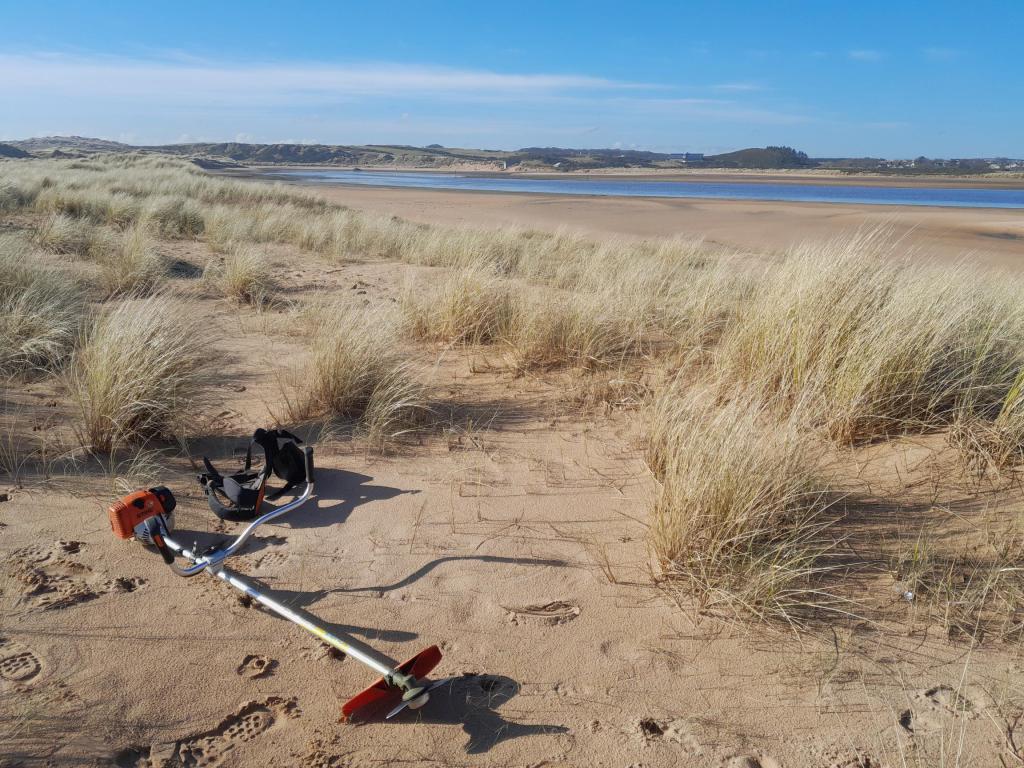
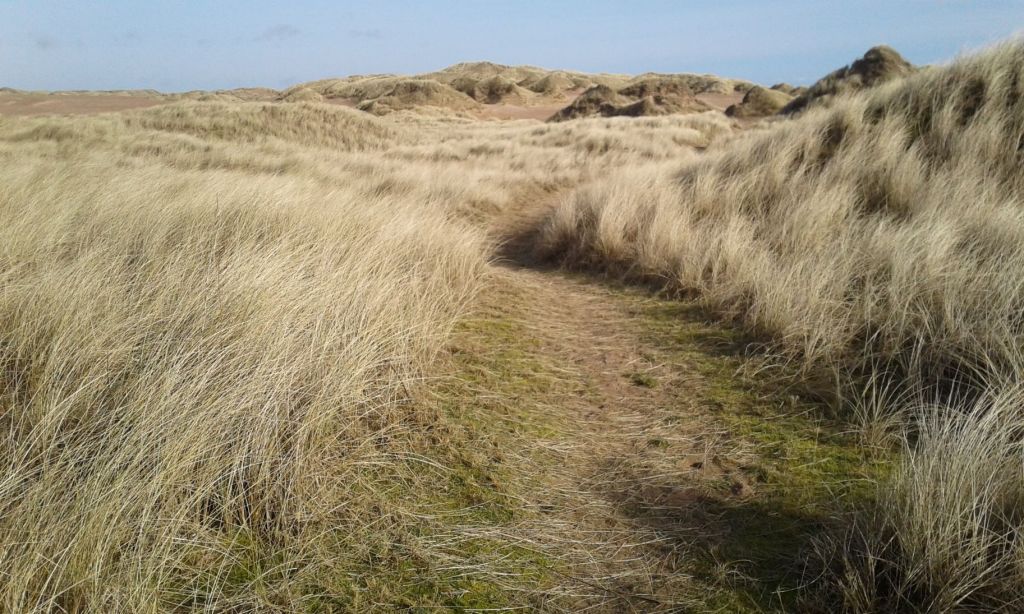
The three tanks of two-stroke mix required to complete the strimming job were indicative of just how much cutting is required these days. In my early seasons at Forvie, this wasn’t necessary at all, but there has been a marked change in the vegetation cover at the ternery over the past fifteen years or so. As mentioned previously, the birds themselves are possibly partly responsible, but there seem to be other influences at play too. As we remarked in last week’s Sand Loch blog, the whole Reserve appears to be becoming greener, lusher and more vegetated over time.
Look at and compare the following two photos, from 2011 and 2023 respectively, and you may begin to see my point. Note in particular: 1) the extent of bare sand, 2) the size of the green enriched area around the ternery (south of the big open sand sheet), and 3) the size and position of the aforementioned sand sheet. There’s no doubt there are changes afoot!
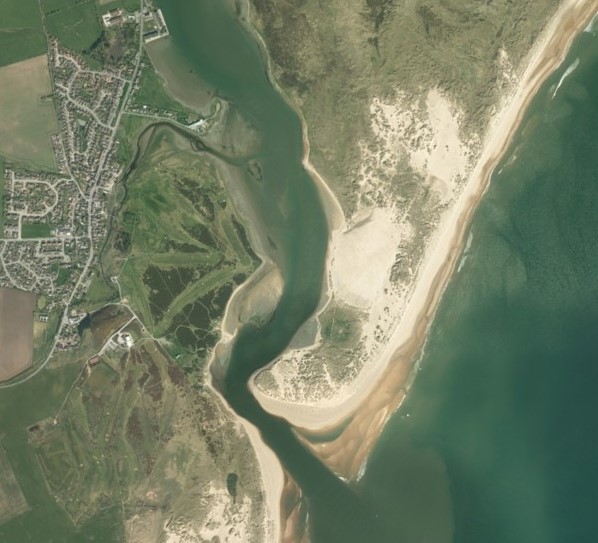
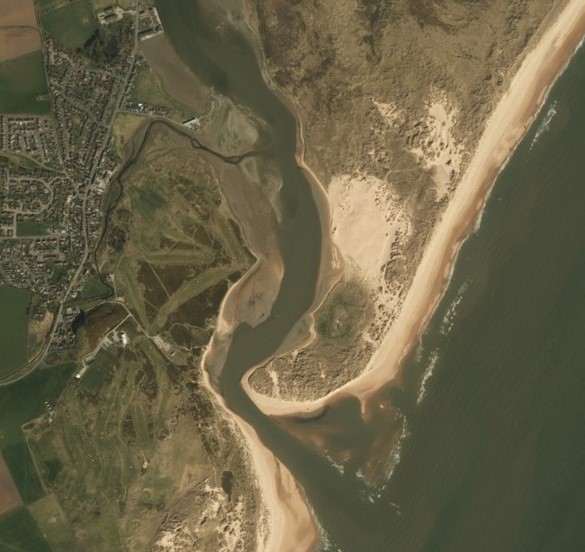
To further illustrate the changes that are taking place over time, we recently received the following photo from Ewen Cameron, long-term friend of Forvie and former work colleague (now happily retired, but as busy as ever banging the drum for nature). This shows the area of the ternery in the late 1970s, and it’s almost unrecognisable from today’s scene. Where has all that bare sand gone? Are the alterations we’re witnessing due to changes in climate, or weather patterns, or something else entirely? What will Forvie look like in another forty years? Food for thought indeed.
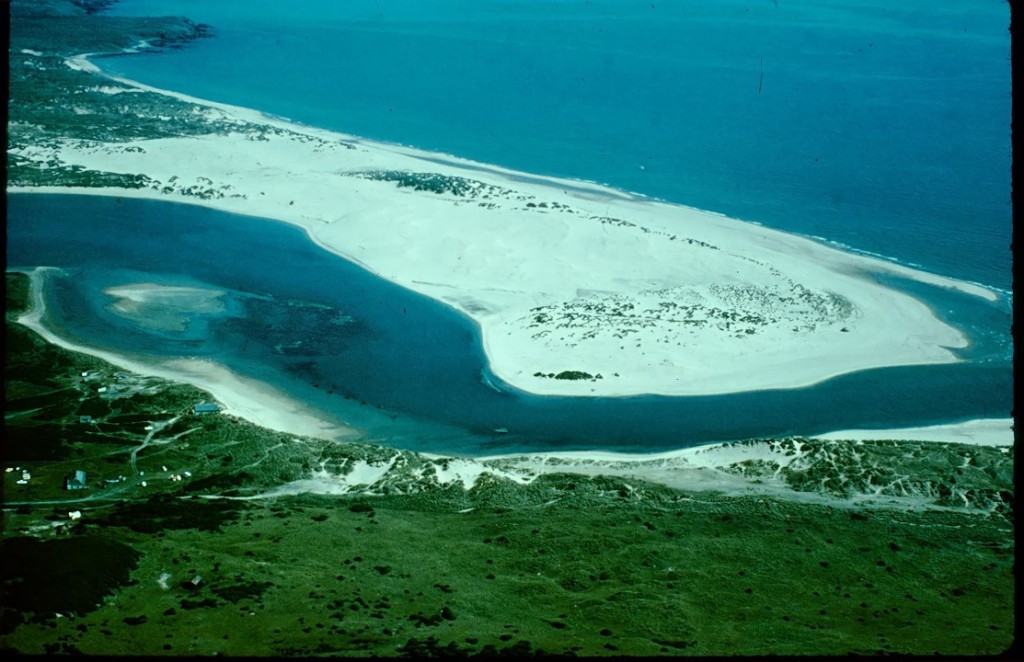
Back to the present day, and while undertaking the fencing job we were treated to the aerial acrobatics and sweetly-lilting voices of several pairs of Ringed Plovers, as they indulged in display-flights over the area in which we were working. Of all the birds to breed at the ternery, these are the earliest to re-occupy their summer territories. They remind me irresistibly of anxious little pensioners who, terrified of being late for an appointment, turn up miles in advance of anything actually happening. Their presence is one of the earliest and surest signs of the impending spring, and they make for a very welcome sight and sound.

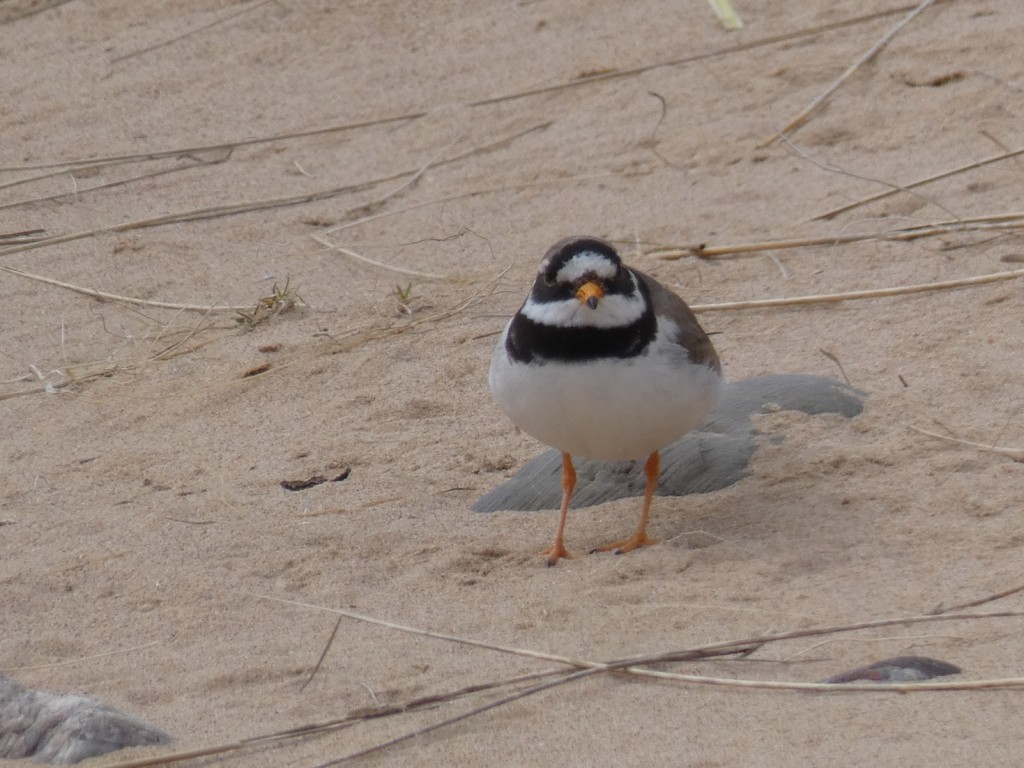
Meanwhile, the Black-headed Gulls have begun to gather on the adjacent estuary, and on the nicer days such that we had early in the week, they’ve started to make the right noises. As Catriona quite correctly observed, it begins to sound like summer at Forvie when the gulls find their collective voice.
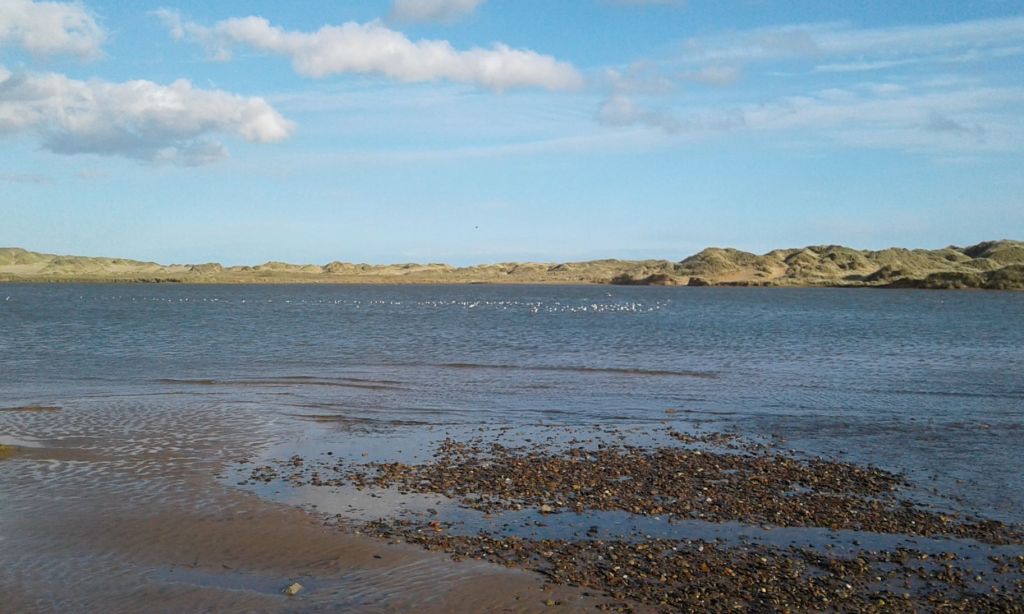
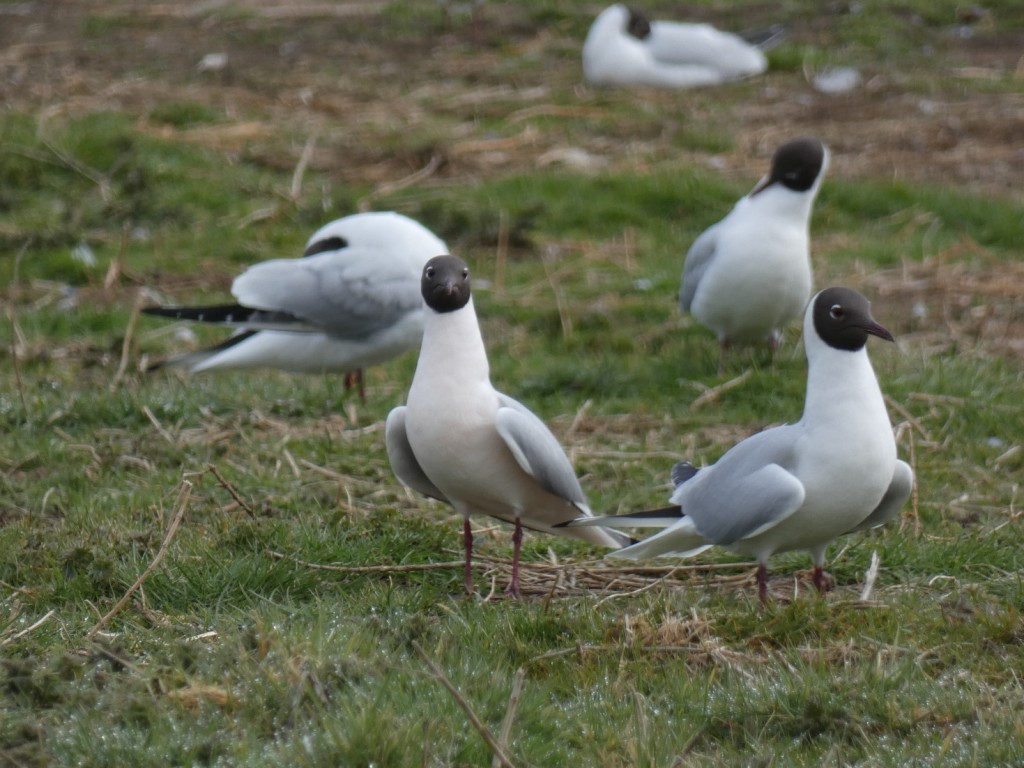
Another species making its presence felt on the estuary during the week was the Red-breasted Merganser. These rakish diving-ducks are looking their smartest just now, with the drakes trying hard to impress the females. Their plumage is a riot of different colours and textures, and a close-range view of one is always enjoyable. In both sexes, the spiky ‘punk hairdo’ crest is a key field-mark, and this helps the casual observer to separate this species from its close relative the Goosander.

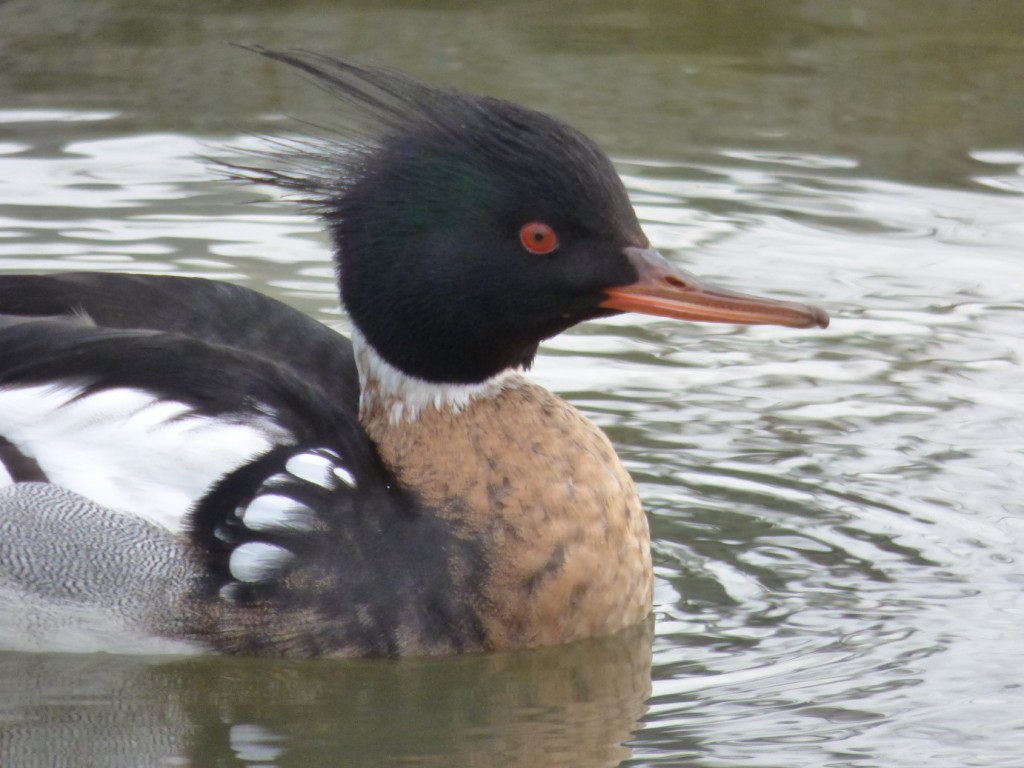
A much smaller piece of bird news with which to finish up this week – but a significant one nonetheless. Friday morning saw myself, Danny and volunteer Richard return to the ternery to continue with some fencing work. On leaving the van at the little shelter-belt of trees south of Waterside, we met with the high-pitched contact-calls of a Goldcrest emanating from the dense Sitka Spruce cover. Goldcrests are well-known for their astonishing autumn migration from Scandinavia, when they arrive exhausted but unbeaten on our coast after a marathon non-stop flight. Of course, those that have survived the winter must return again in the spring, and it’s possible that this particular Goldcrest was in the process of doing just that. As such, it probably constitutes the first bona-fide spring migrant of 2024!
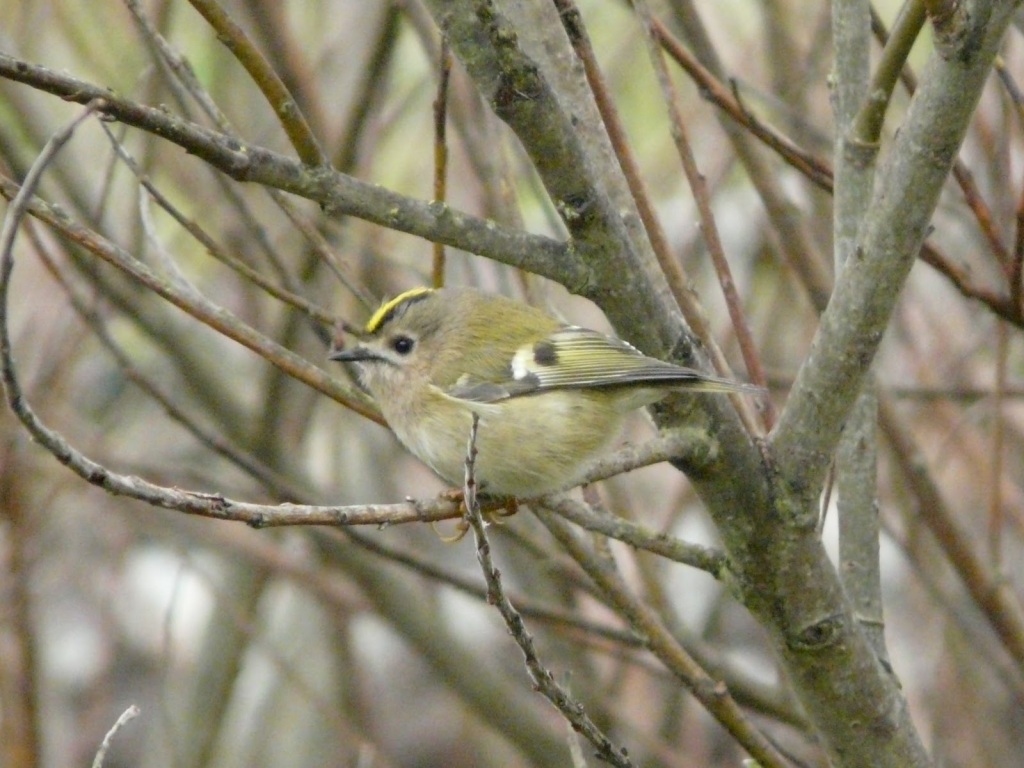
Well, that’s it then – the crazy season at Forvie is officially underway. Fasten your seat belts folks.
